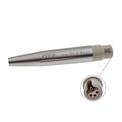
The aerospace composite market is poised for substantial growth in 2024, driven by innovations in materials science, manufacturing technologies, and a growing emphasis on sustainability. Composite materials, essential for reducing aircraft weight and enhancing fuel efficiency, are increasingly being adopted across the aerospace industry, setting new trends that are shaping the future of aviation.

Emerging Trends in Composite Materials
One of the most significant trends in the aerospace composite market is the advancement in carbon fiber composites. Carbon fiber reinforced polymers (CFRP) are gaining traction due to their superior strength-to-weight ratio, corrosion resistance, and durability. These properties make CFRPs ideal for critical structural components such as fuselage sections, wings, and tail assemblies. The increasing use of CFRPs is driven by the need for lightweight materials that can reduce fuel consumption and improve aircraft performance.
Another trend is the development of next-generation composite materials. Researchers and manufacturers are exploring hybrid composites, which combine carbon fibers with other materials like glass or aramid fibers. These hybrid composites offer tailored properties, balancing strength, flexibility, and cost-effectiveness. Additionally, there is a growing interest in thermoplastic composites, which provide advantages in recyclability and ease of processing compared to traditional thermoset composites.
Technological Innovations in Manufacturing
Technological advancements in manufacturing processes are also shaping the aerospace composite market. Automated fiber placement (AFP) and resin transfer molding (RTM) are two key technologies that have revolutionized composite manufacturing. AFP allows for precise placement of fibers, enabling the production of complex, high-performance components with minimal waste. RTM, on the other hand, improves the infusion of resin into fiber preforms, resulting in stronger and more consistent parts.
Additive manufacturing, or 3D printing, is another innovative technology impacting the aerospace composite market. This technology allows for the creation of intricate composite structures that are difficult or impossible to produce using traditional methods. The ability to print composite materials layer by layer opens up new possibilities for custom-designed parts with optimized weight and strength characteristics.
Sustainability and Environmental Considerations
Sustainability is a growing focus within the aerospace industry, and this trend is reflected in the aerospace composite market. Manufacturers are increasingly looking for ways to reduce the environmental impact of composite production and disposal. This has led to the development of bio-based composites made from renewable resources and the implementation of recycling programs for composite materials.
The trend towards electric and hybrid-electric aircraft is also driving demand for lightweight, high-performance composites. These aircraft designs prioritize energy efficiency, and the use of advanced composites is critical to achieving the necessary weight reductions. As a result, the aerospace composite market is expected to see increased investment in sustainable materials and manufacturing processes.
Regional Market Dynamics
Geographically, North America and Europe remain the largest markets for aerospace composites, with major aircraft manufacturers like Boeing and Airbus leading the adoption of advanced composite materials. However, the Asia-Pacific region is expected to experience the fastest growth, driven by rising air travel demand and expanding aerospace manufacturing capabilities in countries like China and India.
Future Outlook
Looking ahead, the aerospace composite market is set for continued growth and innovation. The combination of advanced materials, cutting-edge manufacturing technologies, and a strong focus on sustainability will drive the development of next-generation aerospace composites. As the industry moves towards more efficient and environmentally friendly aircraft, the role of composites will become increasingly vital in shaping the future of aviation.
For More Info: - https://www.gmiresearch.com/report/aerospace-composites-market-analysis-industry-research/
In conclusion, the aerospace composite market in 2024 is characterized by technological innovation, emerging trends in materials, and a strong emphasis on sustainability. These factors are collectively driving the growth and evolution of the market, positioning aerospace composites as key enablers of future advancements in the aerospace industry.
Leave a Reply
You Might Like Also

Insulin Pump Market 2024: A Growing Revolution in Diabetes Care

Pharmaceutical Packaging Market: Trends and Insights for 2024

Powder Coatings Market 2024: Trends, Growth, and Outlook















